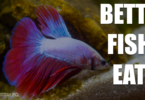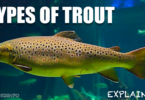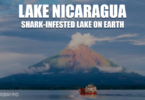Australia is known for its exotic wildlife with many natural wonders that leave visitors in awe of Mother Nature’s creation. Among these treasures, Shark Bay stands out as a wonderful World Heritage Site. Shark Bay of Australia the west coast has abundant marine life, mangrove growth, and history. In this article, we will explore the unique characteristics of Shark Bay, the many marine species that inhabit its waters, and the critical role mangroves play in preserving this incredible ecosystem.
Shark Bay | A World Heritage Site Rich in Marine Life, And Mangroves
Shark Bay is a remote and pristine bay on the west coast of Australia in the state of Western Australia. Covering 23,000 square kilometers, it is an area of unparalleled natural beauty that has attracted generations of travelers, scientists, and nature lovers and whose name conjures up images of fearsome predators, but of course, Sharks Bay is a haven of diversity and marine life
UNESCO World Heritage Status
Shark Bay gained international recognition in 1991 when it was designated a UNESCO World Heritage Site. This top list is reserved for places of exceptional natural or cultural significance, considered to be of great value to humanity Shark Bay certainly fits the bill in terms of natural significance, because its ecosystem system is unique and rich in a world of natural wonders.
The Marine Life of Shark Bay
Shark Bay is a treasure trove for marine enthusiasts and biologists, thanks to the diversity and abundance of marine life. Some of the notable species of Shark Bay are:
Dugong (Dugong dugon): Dugongs, which are sometimes known as “sea cows,” are slow-moving herbivorous animals that eat seagrass. Shark Bay is one of their last strongholds, and these iconic creatures abound mightily. It is a spectacular sight to watch the graceful movements of the dugong as it feeds on seagrass.
Bottlenose Dolphin (Tursiops truncatus): Researchers have studied these sharks extensively and gained fascinating insights into their social behavior and communication. You can also take part in guided dolphin excursions to get closer to these intelligent mammals.
Green Sea Turtles (Chelonia mydas): These ancient reptiles have been around for millions of years and are an integral part of the marine ecosystem of Shark Bay You can find them nesting on the bay’s sandy beaches or floating gracefully in the water as they is as clear as a mirror.
Shark And Rays: Shark Bay lives up to its name when it comes to shark ray populations. Species such as the tiger shark and the critically endangered relief fish are among the top predators that maintain the ecological balance in the bay.
Birds: Shark Bay’s abundant marine life also attracts a wide variety of birds. From osprey and pelicans to rare migratory shorebirds, the area is a bird-watching paradise.
The significance of these marine species goes beyond their physical appearance. They are an integral part of a well-balanced ecosystem, and their presence is a testament to the health of Shark Bay waters.
The Mangrove in Shark Bay
Mangroves are another important part of the Shark Bay ecosystem, playing an important role in maintaining the health and integrity of this World Heritage Site. The mangrove in Shark Bay is important in the following ways.
Erosion Control: The dense mangrove roots act as a natural barrier to coastal erosion, stabilizing the coastline and protecting the land from erosion by waves and wave forces around
Marine Life Sanctuaries: Mangroves provide a safe haven for juvenile fish, shelter, and food sources, allowing juvenile marine mammals to grow and thrive before moving into open water.
Freshwater: Mangroves filter and purify water as it flows through their veins, trapping sediments and absorbing nutrients. This approach improves the water quality of the bay and benefits all ecosystems.
Carbon Sequestration: Mangroves know how to remove carbon dioxide from the atmosphere, helping to reduce the effects of climate change. They store carbon in their underlying biomass and sediment.
Ecology: Like seagrass beds, mangroves are ecological hotspots. A variety of birds, crabs, and fish find shelter and nourishment in the tangles and nutrient-rich algae.
Conclusion
Shark Bay is a UNESCO World Heritage Site, with marine life, extensive seagrass beds, and reliance on vital mangroves, living proof of the interconnectedness and importance of Earth’s ecosystems need to be preserved.
A visit to Shark Bay is more than just an opportunity to experience natural wonders; It is also an opportunity to study the delicate balance that holds our planet together. As travelers and stewards of the environment, we have a responsibility to protect and preserve this unique part of the world, ensuring the continued success of Shark Bay for generations to come.







